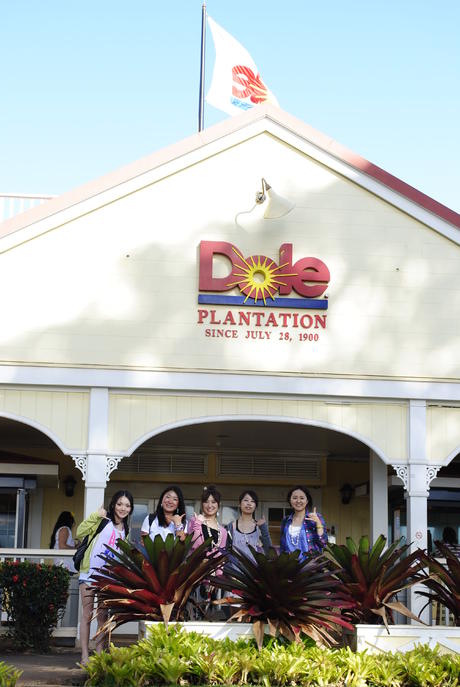Previously, I wrote a short entry about the pineapple industry started in Hawaii. Today, I’d like to take you on a journey of James Dole, the man who made the pineapple industry the number one industry in Hawaii.
In 1899, James Dole moved to Hawaii after studying business and agriculture at Harvard University. It was a time when agriculture was in full swing in the U.S. and Dole felt there was a future in agriculture in Hawaii. He dreamed of expanding Hawaii’s agriculture and exporting produce to the continental U.S.
Soon after moving to Oahu, he purchased 61 acres of farm land in Wahiawa and started a pineapple plantation which proved to be a huge success. There were others besides Dole who were growing pineapples but he felt particularly strong about the potential for Hawaii’s pineapples and felt it could be the island’s largest produce. He went on to successfully create a pineapple industry and became known as the Pineapple King throughout the U.S.
Dole was aware of the high demand of pineapples in the continental U.S., as well as, new technology that would allow for rapid transportation across the Pacific Ocean. Furthermore, improvements in the canning process allowed food to keep for longer periods, which helped Dole’s business. Cans which were airtight and made sturdy for transportation allowed pineapple to be transported over long distances yet remain fresh. It was perfect for the pineapple industry.
Dole’s first cannery was build in Wahiawa in 1901. After a few years, the cannery was relocated near the harbor in Honolulu where there was a concentration of labor and quick transportation to the shipyard. The water tower which was shaped like a pineapple soon became a landmark as it could be seen from anywhere in Honolulu. At one point, this cannery was the largest cannery in the world. The cannery was in operation until 1991.
When Dole first started his plantation business, pineapples were considered to be a unique and exotic fruit in western countries. In Europe and New York, pineapples appeared in art, such as paintings and sculptures, but only a few knew how to handle and prepare a pineapple for consumption. Dole, along with other businessmen, started researching how to make the pineapple sweeter. They created unique recipes such as Pineapple Pie and Pineapple Salad and advertised across the U.S. which drew attention. They also educated food distributors on how to identify differences in quality and how to prepare the fruit. These efforts proved to be effective as the demand for pineapple increased and expanded to the global market.
One of America’s staple recipes, The Pineapple Upside Down Cake, became famous from Dole’s sponsored pineapple recipe contest in 1925, which had 60,000 participants. Dole’s canned pineapples became a part of every household and took up a part of every family’s kitchen cabinet space. The demand for pineapple continued to grow and in 1922 Dole expanded his plantation by purchasing 20,000 acres of land on the island of Lanai. He relocated the world’s largest cannery and took ownership of the agriculture farm. Plantation Village became home to over 1,000 laborers and their family. Over the course of 70 years, Lanai became known as Pineapple Island as over 75% of the world’s pineapples were produced there. In the 1930s, Lanai became known worldwide as the capital of pineapple.
According to James Dole, the Hawaiian Pineapple Company produced over 200,000 tons of pineapple annually. The pineapple industry became the second largest industry in the state. In the 1940s, there were eight pineapple companies in operation. Dole’s company was the largest company in the state with a cannery on Lanai and Oahu, 3,000 full time employees and 4,000 seasonal employees.
James Dole passed away in 1958 at the age of 80. He was known world wide as the founder of the Dole Company and he had created a brand name that was recognized by everyone.
